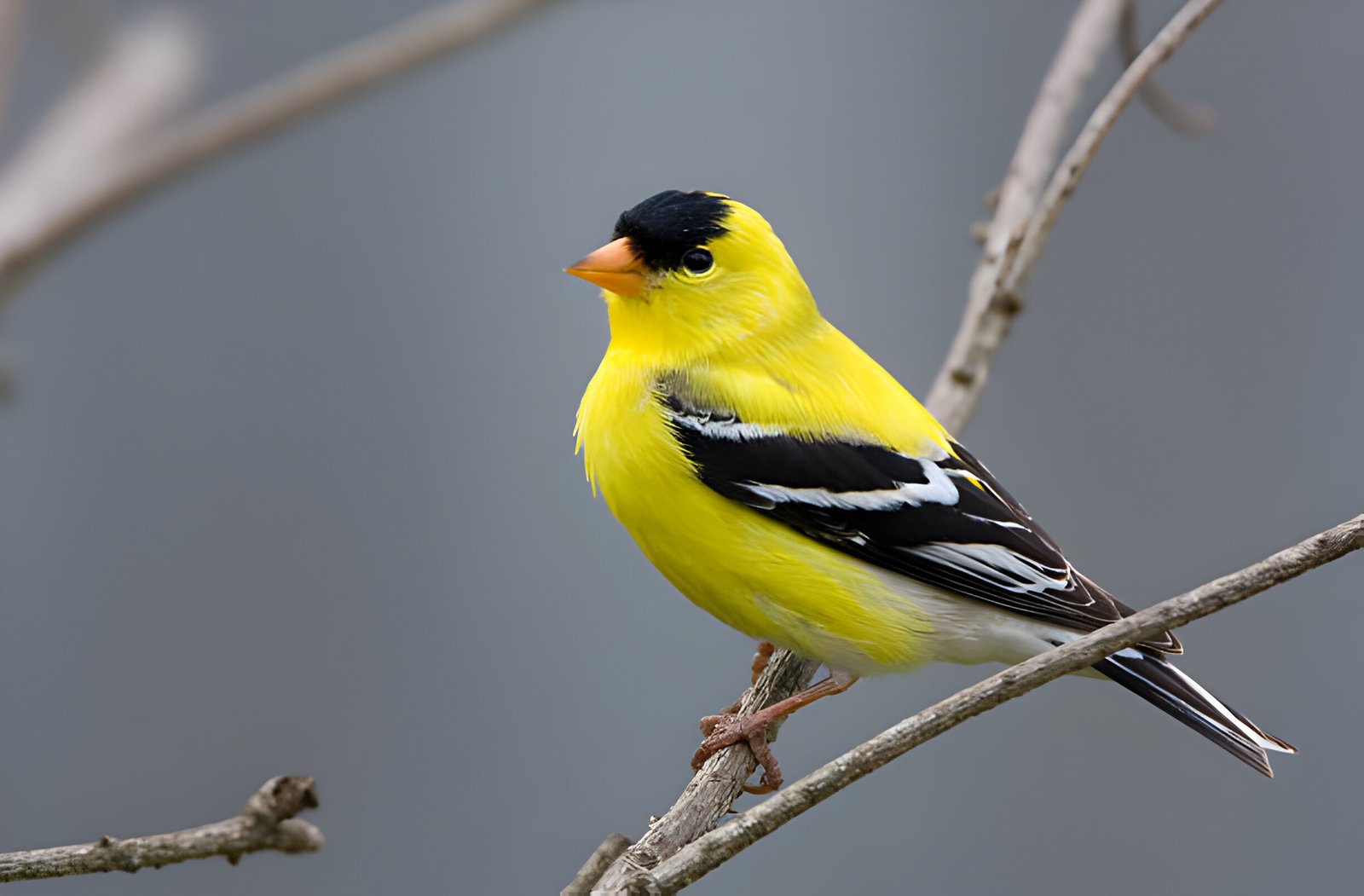Image Credit: GetyImage
As the frost of winter melts away, the arrival of spring is heralded not just by the blossoming flowers but by the chorus of birds returning to their nesting grounds. The bird symbolizing spring is not just a sign of warmer days ahead but a symbol of renewal and rebirth, deeply embedded in cultural narratives and natural cycles alike. The songs of birds in spring, from the first chirp of the robin to the melodic tunes of warblers, not only signify the change of seasons but also carry a deeper meaning, connecting us to the natural world in profound ways.
This article explores the significance of the bird symbolizing spring, shedding light on specific birds such as robins, known as the quintessential spring bird, warblers with their melodic arrival, and swallows heralding mild weather, among others. Each bird carries its own unique story and significance, from signifying the arrival of spring to embodying the concepts of rebirth and renewal. As we delve into the characteristics and cultural meanings of these birds of spring, including insights into what birds like the red-breasted meadowlark and chickadees symbolize, we offer readers a comprehensive understanding of their importance in heralding the season of growth and renewal.
Table of Contents
ToggleRobins: The Quintessential Spring Bird
Historical Significance
American Robins hold a special place in cultural narratives, often viewed as harbingers of spring. Their vibrant presence and cheerful songs mark the end of winter and symbolize renewal and rebirth. This bird’s significance is rooted in various folklore and is celebrated in many communities across North America.
Behavior and Habitat
Robins are adaptable, thriving in diverse environments from urban gardens to remote forests. They are commonly seen on lawns, tugging earthworms from the ground, and are known for their robust, orange breasts and melodious calls. Their ability to coexist in both wild and urban areas makes them a familiar sight to many.
Migration Patterns
While often associated with the arrival of spring, many American Robins do not migrate far, choosing instead to spend the winter within their breeding range. Their migration is highly variable and dependent on local conditions, such as food availability, which influences their visibility in residential areas during colder months.
Warblers and Their Melodic Arrival
Warblers, often heralded as the “jewels of migration,” captivate birdwatchers with their vibrant plumage and melodious songs. These small yet striking birds embark on remarkable migratory journeys from Central and South America to breed across the United States.
Types of Warblers
From the brightly colored Yellow Warbler to the distinctive Black-and-white Warbler, each species boasts unique characteristics. The Magnolia Warbler, for example, is easily recognizable by its bold black and yellow coloring, while the American Redstart flashes orange patches against a dark backdrop.
Migratory Journeys
Warblers travel thousands of miles during their migration. They navigate using celestial cues and the earth’s magnetic field, often flying at night to avoid predators and conserve energy. Their arrival is eagerly anticipated by bird enthusiasts, particularly in areas like Magee Marsh and Cape May, renowned for significant warbler sightings.
Where to Spot Them
Prime locations for observing warblers include diverse habitats such as wooded areas near water bodies. Elevated regions like Garret Mountain Reservation or migration hotspots such as High Island offer birdwatchers a chance to see these birds refuel before continuing their journey. Observing the right weather conditions, especially after storms, can also increase the likelihood of a memorable warbler sighting.
Swallows: Harbingers of Mild Weather
Behavior During Spring
Swallows signal the arrival of spring by returning to North America from their Central American wintering grounds. They engage in remarkable aerial displays, capturing insects in flight, which not only showcases their agility but also highlights their role in controlling insect populations.
Species of Swallows
There are eight species of swallows that breed in North America, including the tree swallow and barn swallow. These birds are known for their vibrant plumage and dynamic flight patterns, often nesting in accessible areas like eaves and cliffs, and utilizing old nests to raise their young.
Importance in Ecosystem
Swallows are crucial for maintaining a healthy ecosystem. Their diet primarily consists of insects, which helps regulate pest populations. The presence of swallows is a natural indicator of the environmental health, marking the change in seasons and contributing to biodiversity through their nesting and feeding habits.
Other Birds Signifying Spring
Great Horned Owls
Great Horned Owls mark the transition from winter to spring with their distinct calls in the Sonoran Desert. These large owls, widely distributed across the Americas, prefer forest edges for hunting and nesting. Their diet is diverse, ranging from small mammals to larger prey like herons. They start breeding in winter, with their loud calls peaking during this season, and lay eggs in early spring.
Red-winged Blackbirds
Red-winged Blackbirds are notable for their early spring arrival. Males arrive first to claim the best territories, performing elaborate displays to attract females. These birds are commonly seen across North America, with their presence signaling the nearing of spring. Their nesting patterns have shifted earlier over decades, reflecting changes in climate patterns.
Regional Variations in Spring Indicators
Migratory birds like Ardea cinerea and Alcedo atthis serve as indicators of spring in various regions. These birds, dependent on wetlands, migrate to temperate zones when food is most abundant, which coincides with the start of their egg-laying season. Their migration patterns and the synchronization with food availability like herbivorous insects highlight their role in ecosystem regulation, adapting to varying spring temperatures each year.
Conclusion
Through the exploration of birds like robins, warblers, swallows, and others, this article has illuminated their vital role in symbolizing and signaling the advent of spring, each species bringing its own narrative of renewal and rebirth. By understanding the behaviors, habitats, and migration patterns of these birds, we’ve gained insight into the interconnectedness of ecological systems and the profound cultural significance these avian harbingers hold across various communities. Their presence not only marks a seasonal transition but also enriches our environment and cultural folklore, reinforcing the enduring bond between nature and human perception of change.
Reflecting on the broader implications, it becomes clear that these birds are not merely signs of spring but vital components of the ecosystems they inhabit, playing crucial roles in insect control, pollination, and maintaining biodiversity. Their migratory patterns and nesting behaviors offer valuable lessons on adaptation and sustainability, reminding us of nature’s resilience and the importance of conserving these habitats for future generations. As we close this discussion, let’s carry forward the appreciation for these winged heralds of spring and the myriad ways in which they contribute to the health of our planet and the richness of our cultural narratives.
FAQs
What bird is commonly associated with the arrival of spring? The Bluebird is often seen as a symbol of spring in the northern United States, heralding the arrival of warm weather and gentle south breezes according to a popular weather proverb.
Which bird is often seen as a sign that spring is near? Many people view the American Robin as a sign that spring is imminent. Its appearance is widely celebrated as an indication that warmer days are soon to follow.
Which birds are symbols of new beginnings? The Robin is seen as a symbol of renewal, passion, and the start of new beginnings, embodying traits like patience and wisdom. Similarly, the Stork is associated with rebirth and new life, representing fresh physical or spiritual starts.
What is the spiritual significance of the four birds in relation to the elements? In ancient Greek culture, each bird is believed to represent one of the four essential elements: Earth, Air, Fire, and Water. These elements are thought to correspond to key qualities in a person’s character, and an imbalance among them was believed to lead to ill health.




